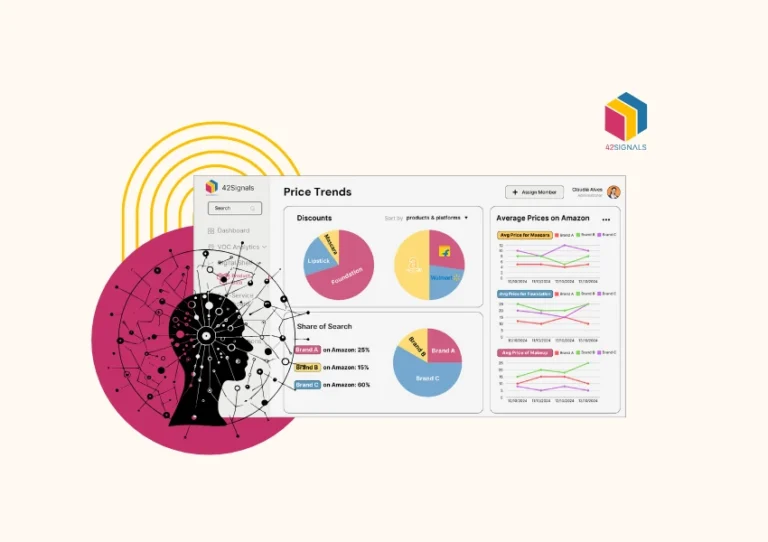Maintaining the integrity of your brand and products often means ensuring that the Minimum Advertised Price (MAP) policies are upheld by retailers and sellers. One way to ensure compliance is through the use of MAP violation software or tools. In this guide, we will delve into the critical features and functionalities you should look for when evaluating MAP violation software.
Key Things to Look for in a MAP Violation Software
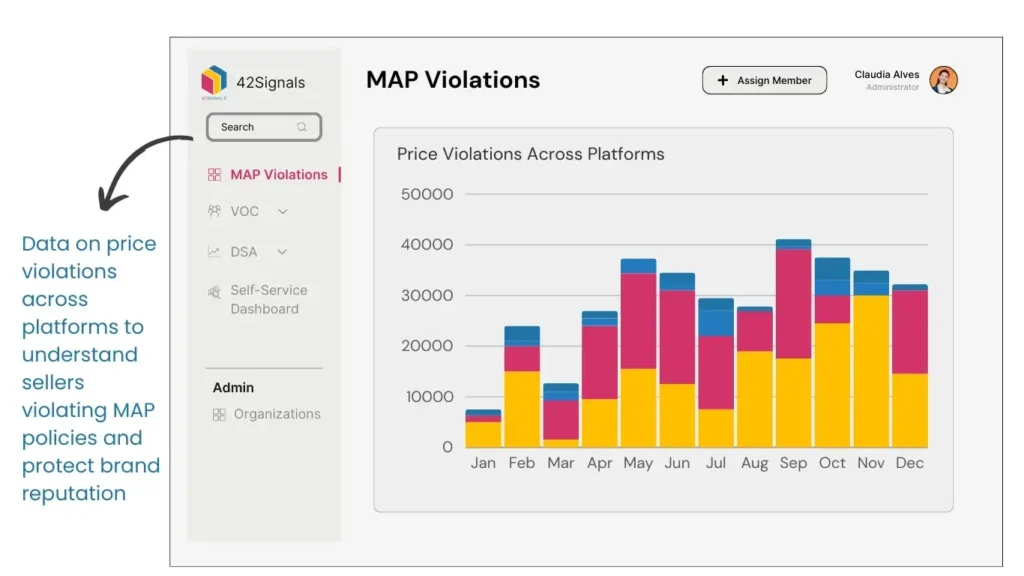
1. Real-time Monitoring:
The primary purpose of MAP violation software is to identify breaches promptly. Therefore, real-time monitoring is vital. It ensures immediate detection and can help in taking corrective action instantly.
The digital retail landscape is remarkably fluid, with prices fluctuating rapidly due to various factors ranging from stock availability to competitive tactics. In such a volatile environment, the primary purpose of MAP violation software is to identify breaches as soon as they occur. Real-time monitoring isn’t just a luxury; it’s an imperative. It ensures that the moment a price drops below the agreed MAP on any platform, the system detects it, allowing brands to take immediate corrective action. For instance, consider the impact of seasonal discounts on a massive e-commerce platform like Amazon. Without real-time insights, a product might be sold at a reduced price for hours, if not days, before the discrepancy is noted. Such a delay can lead to significant revenue losses and potential harm to a brand’s reputation as consumers begin to expect lower prices. Conversely, with real-time monitoring, the brand is alerted instantly, enabling them to address the issue before it escalates, preserving brand value and maintaining consistent price perceptions across all platforms.
Example: Imagine an e-commerce giant like Amazon offering seasonal discounts. A real-time monitoring feature will alert you immediately if any of your product’s prices drop below the MAP, allowing you to address the issue before it escalates.
2. Automated Notifications:
Upon detecting a violation, the system should automatically notify the relevant stakeholders. This minimizes the chance of human oversight and ensures a rapid response.
With countless products across various platforms, tracking MAP violations manually can be akin to finding a needle in a haystack. When a system is configured to alert stakeholders immediately upon detecting a violation, it becomes the frontline defense against potential brand erosion and revenue loss. Such automation is pivotal, not just for efficiency, but also for accuracy. Human monitoring is susceptible to errors, missed checks, and delays.
Automated notifications, on the other hand, operate with unwavering consistency, ensuring that no violation goes unnoticed. Furthermore, these instant alerts empower brands with the ability to act swiftly, addressing violations head-on, and reinforcing partnerships with sellers based on transparency and mutual respect. In essence, automated notifications act as the vigilant guardians of a brand’s pricing strategy, offering peace of mind and ensuring that brand values remain uncompromised.
Example: Brand XYZ receives an email alert the moment a seller lists their product below the agreed price on a popular e-commerce platform.
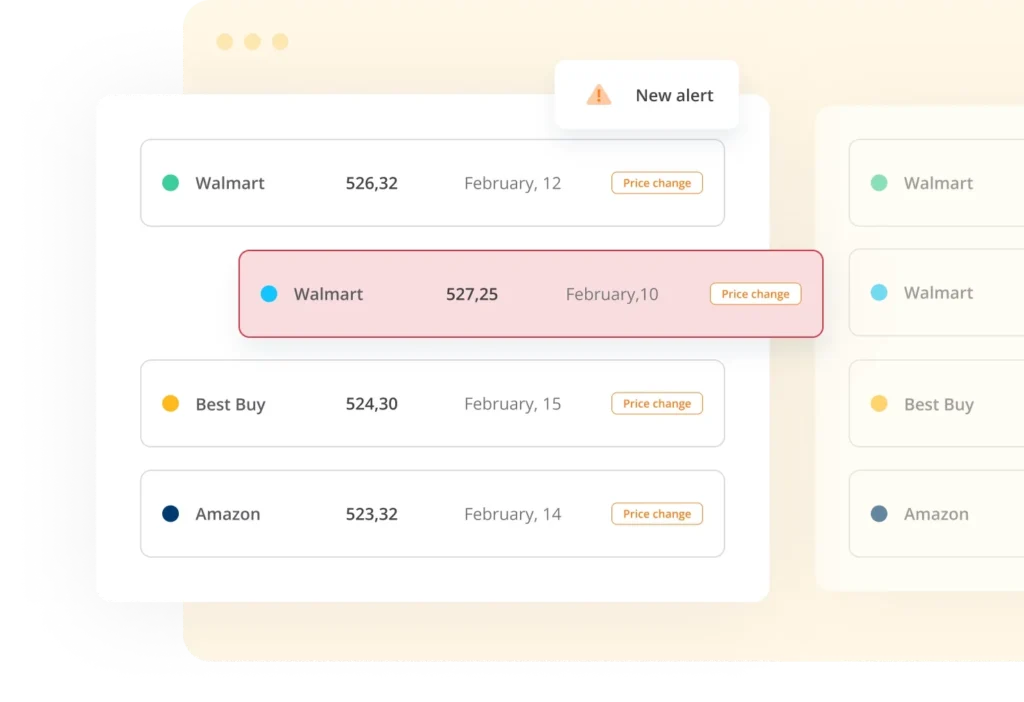
3. Comprehensive Reporting:
Detailed reports provide insights into violations, enabling brands to make informed decisions about partnerships and pricing strategies.
Comprehensive reporting is another cornerstone of effective MAP violation software. These reports should not only highlight violations but also provide context, such as the frequency of violations by specific sellers, the platforms where violations are most common, and trends over time. This data is invaluable for strategic decision-making.
For example, if a particular retailer is consistently violating MAP policies, the brand might consider reevaluating its partnership with that retailer. Conversely, if violations are sporadic and quickly corrected, it might indicate a need for better communication and training with sellers.
Moreover, detailed reports can help brands identify patterns and anticipate potential issues before they become widespread. For instance, if a certain product category is frequently subject to violations, it might suggest that the MAP for those products needs to be reassessed. Comprehensive reporting thus serves as both a diagnostic tool and a strategic asset, enabling brands to maintain control over their pricing and protect their market position.
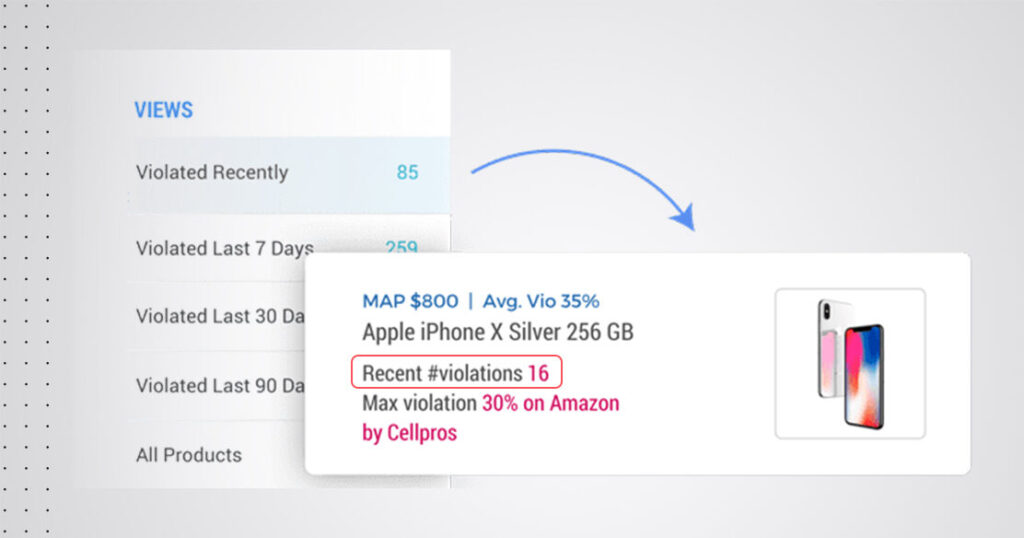
4. Integration Capabilities:
For efficiency, the software should easily integrate with other systems, such as inventory management, CRM, or e-commerce platforms.
Integration capabilities are crucial for streamlining operations and ensuring that MAP violation software works seamlessly within your existing tech stack. For example, integration with a CRM system can automatically log violations and assign tasks to the sales team to contact the retailer. Similarly, integration with inventory management systems can provide additional context, such as whether a violation is linked to overstocking or clearance sales.
Example: By integrating with CRM, the brand can automatically log a violation and assign a task to the sales team to contact the retailer.
5. Multi-platform Scanning:
With the proliferation of online marketplaces, it’s crucial for the software to scan multiple platforms for violations.
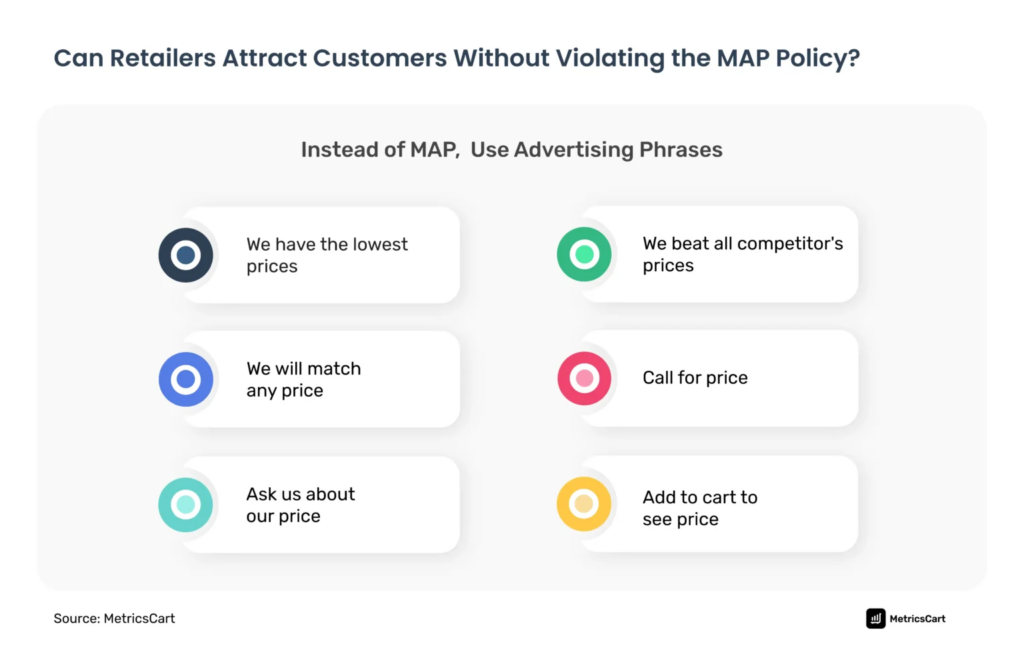
Image Source: Metrics Cart
In today’s fragmented retail environment, products are often listed on multiple platforms, from Amazon and eBay to niche marketplaces and even social media shops. A robust MAP violation software should be capable of scanning all these platforms to ensure comprehensive coverage. This multi-platform scanning capability ensures that no violation goes unnoticed, regardless of where it occurs.
Example: A product listed on Amazon, eBay, and Walmart. The software should be able to detect MAP violations across all these platforms.
6. User-friendly MAP Violation Software Interface:
A complex system can deter users. The software should be intuitive, easy to navigate, and require minimal training.
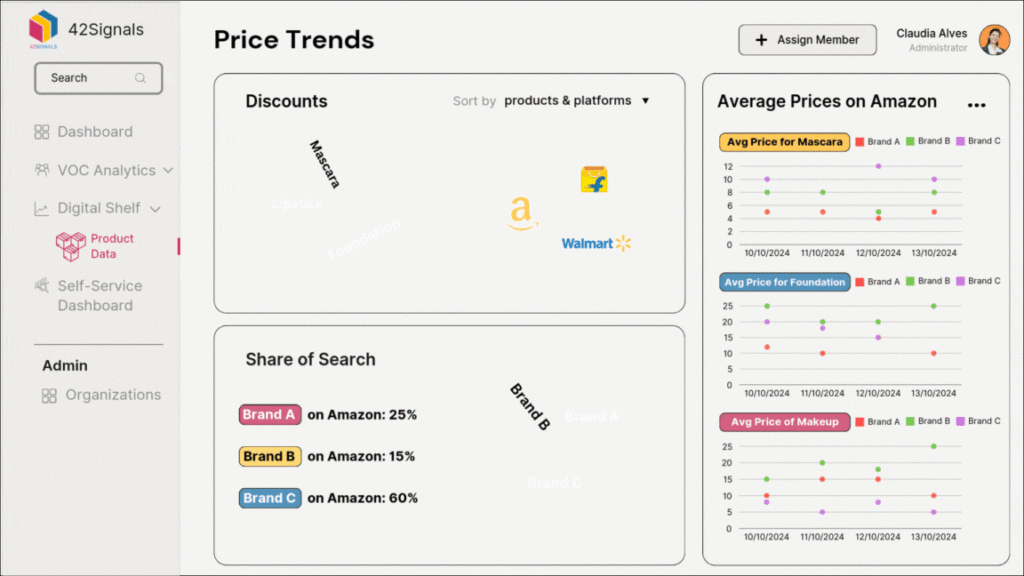
A user-friendly interface is essential for ensuring that the software is adopted and used effectively by your team. If the system is too complicated, it may lead to errors, missed violations, or even abandonment of the tool altogether. Look for software that offers a clean, intuitive interface with clear navigation and easy-to-understand dashboards. This will minimize the learning curve and ensure that your team can start using the software effectively right away.
7. Secure and Compliant:
Ensure the software adheres to data protection regulations and maintains the confidentiality of your business data.
Data security is a critical consideration when choosing any software, and MAP violation tools are no exception. The software should comply with relevant data protection regulations, such as GDPR or CCPA, and should employ robust security measures to protect your business data. This includes encryption of data in transit and at rest, regular security audits, and access controls to ensure that only authorized personnel can access sensitive information.
8. Scalability:
As your business grows, the software should be able to accommodate an increase in products, retailers, and marketplaces.
Scalability is another important factor to consider. As your business expands, the volume of products, retailers, and marketplaces you need to monitor will also grow. The MAP violation software you choose should be able to scale with your business, handling increased data loads without compromising performance. This ensures that the software remains effective and reliable as your business evolves.
Conclusion on MAP Violation Software
Choosing the right MAP violation software can mean the difference between maintaining brand integrity or facing devaluation. Ensure the software you select has these key features to safeguard your brand’s reputation.
Connect with 42Signals for a MAP Violation Software Demo
If you’re searching for a comprehensive MAP violation solution tailored to your needs, look no further than 42Signals. We combine cutting-edge technology with deep market insights to offer you a robust MAP monitoring and violation resolution system. Connect with us today at sales@42signals.com, and let’s uphold your brand value together!
Frequently Asked Questions
What is MAP Violation?
A MAP violation occurs when a retailer or seller advertises a product below the Minimum Advertised Price (MAP) set by the manufacturer or brand. MAP is the lowest price at which a product can be advertised publicly, though the actual selling price can be lower. Violations typically happen on e-commerce platforms, websites, or in promotional materials like flyers and emails. MAP violations can harm a brand’s reputation, devalue its products, and create unfair competition among retailers.
Is MAP Pricing Illegal?
No, MAP pricing itself is not illegal. It is a legal pricing policy used by brands to maintain consistent pricing across retail channels. However, the enforcement of MAP policies must comply with antitrust and competition laws. Brands cannot force retailers to sell products at a specific price (price-fixing), as this would violate laws like the Sherman Antitrust Act in the U.S. Instead, MAP policies are agreements that set the minimum advertised price, and brands can choose to stop doing business with retailers who repeatedly violate these agreements.
What Does MAP Stand for in Compliance?
In compliance, MAP stands for Minimum Advertised Price. It is a pricing policy used by brands to ensure that their products are advertised at or above a specified price point. MAP compliance ensures that all retailers adhere to the agreed-upon pricing guidelines, which helps maintain brand value, prevent price wars, and create a level playing field for all sellers. Compliance is typically monitored through MAP violation software, which tracks pricing across multiple platforms and alerts brands to any breaches.
How to Enforce MAP Pricing?
Enforcing MAP pricing requires a combination of clear policies, consistent monitoring, and effective communication with retailers. Here are the key steps to enforce MAP pricing:
- Establish Clear MAP Policies: Create a well-defined MAP policy that outlines the minimum advertised price for each product, the consequences of violations, and the process for reporting breaches. Ensure all retailers agree to these terms before doing business.
- Monitor Retailers Regularly: Use MAP violation software to track pricing across e-commerce platforms, websites, and other advertising channels. Real-time monitoring helps identify violations quickly.
- Send Notifications for Violations: When a violation is detected, notify the retailer immediately. Automated notifications can streamline this process and ensure timely communication.
- Take Corrective Action: If a retailer repeatedly violates the MAP policy, enforce consequences such as withholding shipments, revoking discounts, or terminating the business relationship.
- Educate Retailers: Provide training and resources to help retailers understand the importance of MAP compliance and how it benefits both parties.
- Maintain Consistent Enforcement: Apply the MAP policy consistently across all retailers to avoid claims of favoritism or unfair treatment.

